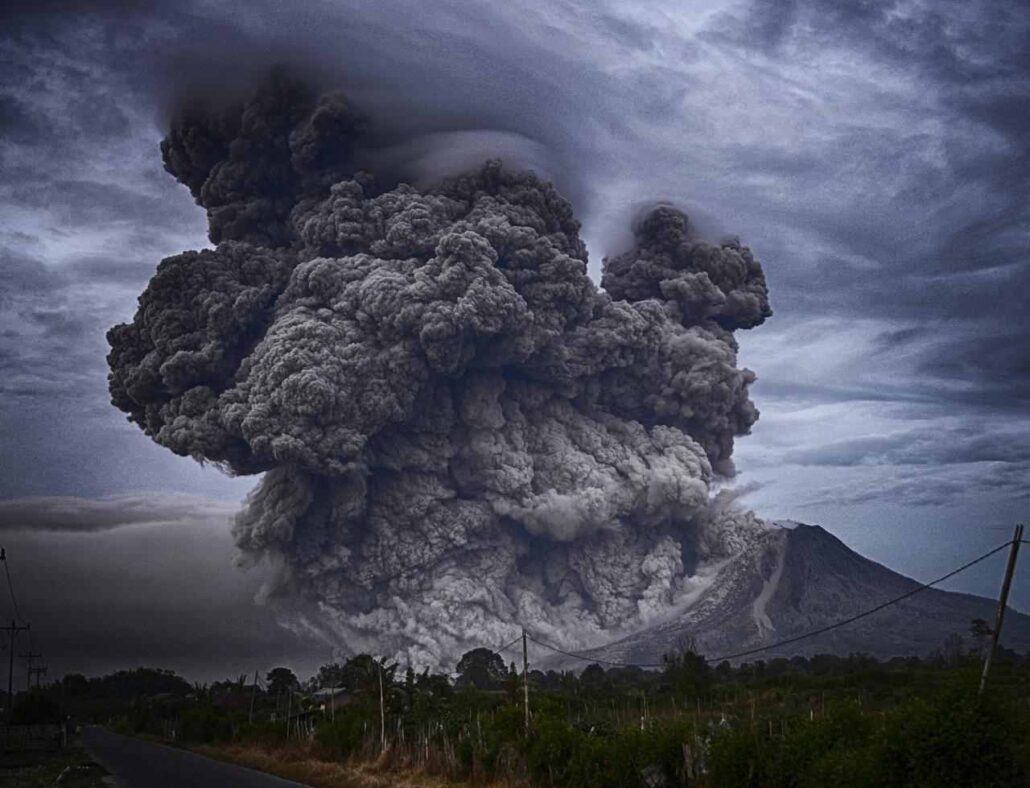If you’re looking for an unforgettable adventure, consider visiting one of the world’s active volcanoes. These awe-inspiring natural wonders are constantly changing and offer visitors a unique opportunity to see the power of nature up close. Here is a list of 10 active volcanoes that are worth exploring:
1. Cotopaxi Volcano in Cotopaxi National park
2. Kīlauea, Hawaii
3. Nisyros, Dodecanese, Greece
4. Eyjafjallajökull, Iceland
5. Mount Vesuvius, Naples, Italy
6. Whakaari (White Island), New Zealand
7. Mount Aso, Japan
8. Arenal, Costa Rica
9. Mount Nyiragongo, Democratic Republic of the Congo
10. Chimborazo Volcano Ecuador
Cotopaxi Volcano in Cotopaxi National park, Ecuador: This volcano is one of the world’s highest active volcanoes and is located in a national park that is also home to other volcanic peaks. The best time to visit is between December and January when the weather is dry.
Kīlauea, Hawaii: Kīlauea is one of the most active volcanoes in the world and offers visitors a chance to see lava up close. The best time to visit is between April and May.
Nisyros, Dodecanese, Greece: Nisyros is a small island with its own volcano that last erupted in the late 19th century. The island has several volcanic craters that can be visited. The best time to visit is between June and September.
Eyjafjallajökull, Iceland: Eyjafjallajökull became famous after its 2010 eruption caused disruptions to air travel. The volcano is located in a national park and offers visitors stunning views of glaciers and waterfalls. The best time to visit is between June and August.
Mount Vesuvius, Naples, Italy: Mount Vesuvius is the only active volcano on the European mainland and last erupted in 1944. The best time to visit is between April and June when the weather is warm but not too hot.
Whakaari (White Island), New Zealand: Whakaari is an uninhabited island that is home to an active volcano. Visitors can take boat tours around the island to see the volcano up close. The best time to visit is between December and March when the weather is milder.
Mount Aso, Japan: Mount Aso is the largest active volcano in Japan and is located in a national park. The best time to visit is between April and June when the weather is mild and there are fewer crowds.
Arenal, Costa Rica: Arenal is one of Costa Rica’s most popular tourist destinations due to its proximity to the country’s capital and its active volcano. The best time to visit is between December and April when the weather is dry.
Mount Nyiragongo, Democratic Republic of the Congo: Mount Nyiragongo last erupted in 2002, causing the evacuation of over 500,000 people. The volcano offers stunning views of lava lakes from the crater rim. The best time to visit is between June and August when the weather is dry.
Chimborazo Mount, Ecuador: Chimborazo is the highest volcano in Ecuador and is located in a national park. The best time to visit is between December and February when the weather is dry.
Is it safe to visit an active volcano?

Most volcanoes are considered safe to visit, as long as you take the necessary precautions. First and foremost, it is important to check the status of the volcano before planning your trip. Active volcanoes can erupt without warning, so it is vital to be aware of the latest conditions. It is also a good idea to avoid areas that are prone to ashfall or lava flows. Once you arrive at the volcano, be sure to stay on marked trails and heed any warnings from park staff. If you follow these guidelines, you can enjoy a safe and memorable trip to one of nature’s most amazing landmarks.
How much does it cost to reach an active volcano?
Reaching an active volcano can be a costly endeavor, depending on its location. If the volcano is located on an island, you will need to factor in the cost of traveling to the island as well as the cost of any necessary permits. Once you reach the island, you will likely need to hire a guide to help you navigate to the volcano. The cost of hiring a guide can vary depending on the length of the trip and the level of experience of the guide. However, it is generally recommended that you hire a guide if you are not familiar with the area. In addition to the cost of travel and permits, you will also need to factor in the cost of any equipment that you may need, such as protective clothing and gear for hiking. If you are planning to camp near the volcano, you will also need to account for the cost of food and supplies. Overall, reaching an active volcano can be a costly undertaking, but it can also be a once-in-a-lifetime experience.
These are just a few of the active volcanoes that are worth exploring in your lifetime. So get out there and start planning your next adventure!

